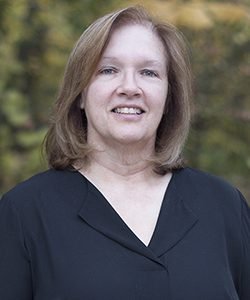Archives: Lessons
Lesson 1: Headings
Start Here
Resources
Center for the Study of Social Policy https://cssp.org
Children’s Trust Fund Alliance: Social Connections Children’s Trust Fund Alliance (sharefile.com)
ACES Connection https://www.acesconnection.com/
PACES Connections www.paceswc.org
Center of the Social and Emotional Foundations for Early Learning (CSEFEL) http://csefel.vanderbilt.edu/
Kentucky Strengthening Families Initiative https://kyecac.ky.gov/families/ky-family-thrive
Support Family Social Connections

As caregivers and people who work with families, it is important for us to help support social connections between families. As we work towards creating these social connections, we have to understand that relationships will look different for everyone. Even if we went through similar or the same events, our perception will be different. We have to consider how a past experiences can impact the way in which we engage with people and the way people will engage with us.
What is a support network?

A support network are the people in your life to help you with your personal and professional goals.
Support networks can include friends, family, co-workers, teachers, neighbors, and more! Having a support network is good for your physical and emotional health (think about the previous topic on social connections to prevent depression).
A support network is able to listen to your concerns, help you come up with ideas, comfort you, and provide you with support.
Test
Course Wrap Up
You have completed the content for Authentic Assessment for Early Childhood: Planning Learning Experiences!!! A few final steps before you are able to access your certificate.
Next Up
This course is the second in a series of assessment courses designed to help early care and education professionals understand how to observe, what to do with that information, and how to implement observation data in daily classroom practices.
Check out the next training in the series:
COMING SOON! – Authentic Assessment for Early Childhood: Working with Families
ECE-TRIS
Do you need credit for this course on your ECE-TRIS record?
If so, mark yes and complete the Information Form.
While a certificate of completion is provided for this course, this is not official documentation for Kentucky Early Care and Education Professionals of clock hours required by the Division of Child Care (DCC), Division of Regulated Child Care (DRCC), or ALL STARS. Your ECE-TRIS records serves as the official record.
Your ECE-TRIS record will be updated within 10 calendar days of completing this course. You must click submit the ECE-TRIS information form to complete the course.
Oops! You need to be logged in to use this form.Application Activity
We have spent most of this training reflecting on using assessments and the KYECS to plan to meet your children’s needs. It sounds complicated, and, in some cases, it is a new way of thinking about our work. But it is expected in our profession, and you have worked hard to practice this process during this training.
As we wrap up this second assessment training, we will return to your focus child from ECE 203: Authentic Assessment for Early Childhood: An Introduction to practice planning based on assessment.
Important Information
This course requires the successful completion of an application activity before completion of the course.
The application activity will be reviewed by the course facilitator, and feedback will be provided within 3 working days of submission.
After successful completion of the course and all required activities, credit will be entered into ECE-TRIS within 10 calendar days.
If you have any questions, please reach out to the course facilitator.
Universal Design for Learning
Lesson Planning Using Assessment Data
Assessments

An early childhood assessment is a process of gathering information about a child, reviewing the information, and then using the information to plan educational activities that are at a level the child can understand and is able to learn from. For this series of modules, we are focusing on classroom/instructional assessment.
Examples of this type of assessment are direct observations of children in authentic tasks and activities, samples of children’s work, and interviews with caregivers and families.
Your Early Education Program or Child Care Home may have already chosen an assessment, or you may be in the process of deciding what assessment is best for your program. We are going to discuss some of the important components of assessment and what makes a quality assessment.
Debrief
This course is the second in a series of courses on assessment. Take a moment to gather your notes and assignment from Authentic Assessment for Early Childhood: An Introduction. You will use the observation from the Introduction course to complete the assignment for this course.

Let’s take a moment to refresh our memory on the first module. Reflect on the following questions and add your response to your course handout.
- What did you see/notice about the child you were observing?
- What were you hoping to learn?
- What did you learn?
- What developmental domains were represented?
- What information from your observation would you share with a parent?
- In looking at the Kentucky Early Childhood Standards, what did you learn about this child?
- What challenges did you encounter?
Welcome
Welcome to module two of our Assessment Training. We are excited to hear what you learned about the child you observed, yourself, and the process of observing. In this module, we will link the knowledge you gained in the last module to how we understand and use assessment in this module.
Need Help?
Reach out to the Course Facilitator or use the Contact Us button at the bottom of each page.

Course Evaluation
Please complete this short survey to help us improve the quality of our courses. Once complete, you will have access to your course completion certificate.
Advocacy, Public Policy, and Activties
Print Course
Final Quiz
Course Wrap Up
Course Evaluation
DGS 109: Incident Reporting
How to Enter an Incident Report in the KYGFIS

Now that we have been introduced to the four classes of incidents, Simon, can you help us understand what needs to be documented in KYGFIS?
Of course! Let’s review the information that needs to be entered. If you have access, you can follow along in KYGFIS.



